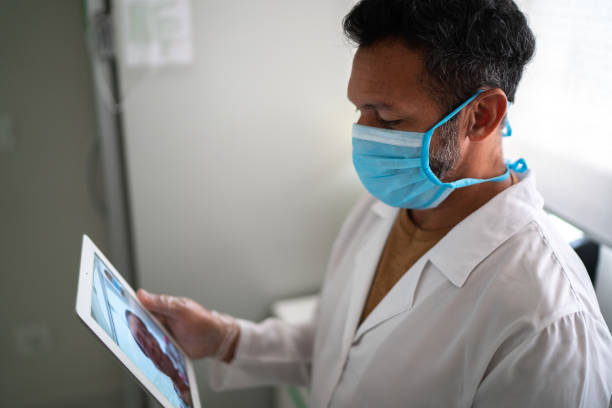Enhancing Patient Health Chronic Care & Telemedicine
In the rapidly evolving landscape of healthcare, chronic care companies are increasingly turning to innovative solutions like telemedicine to revolutionize patient monitoring and enhance overall health outcomes. At the forefront of this transformation is the integration of patient monitoring solutions with telemedicine platforms, providing a seamless and efficient way to remotely monitor patients' health status and deliver personalized care.

In this article, we delve into the pivotal role played by telemedicine in patient monitoring, exploring how chronic care companies leverage this technology to bridge the gap between patients and healthcare providers, facilitate continuous monitoring, and ultimately improve patient health. Through a comprehensive examination of this topic, we aim to highlight the transformative potential of telemedicine in revolutionizing chronic care management and enhancing patient well-being.
Bridging the Gap Between Patients and Providers
One of the key advantages of telemedicine in patient monitoring is its ability to bridge the geographical barriers between patients and healthcare providers. Patients living in remote or underserved areas can now access quality healthcare services without the need to travel long distances. Through telemedicine platforms, chronic care companies can remotely monitor patients' vital signs, medication adherence, and overall health status, ensuring timely interventions and personalized care plans.
Continuous Monitoring and Real-Time Data Collection
Patient monitoring solutions integrated with telemedicine platforms enable continuous monitoring of patients' health parameters in real-time. This continuous data collection provides healthcare providers with valuable insights into patients' health trends, allowing for early detection of potential complications or deterioration in health status. By leveraging telemedicine, chronic care companies can ensure proactive management of chronic conditions, minimizing the risk of adverse events and optimizing patient outcomes.
Enhancing Patient Engagement and Adherence
Telemedicine empowers patients to actively participate in their healthcare journey by providing convenient access to healthcare services and resources. Through telemedicine platforms, patients can engage in virtual consultations with healthcare providers, receive educational materials, and access support groups, fostering a sense of empowerment and self-management. This increased engagement often leads to better adherence to treatment plans and healthier lifestyle choices, ultimately improving patient health outcomes.
Improving Healthcare Accessibility and Affordability
The integration of telemedicine into patient monitoring solutions also addresses the issue of healthcare accessibility and affordability. By eliminating the need for frequent in-person visits to healthcare facilities, telemedicine reduces the financial burden associated with transportation, childcare, and time off work. Additionally, telemedicine allows for more efficient use of healthcare resources, minimizing wait times and improving overall healthcare delivery.
Facilitating Timely Interventions and Preventive Care
Telemedicine enables healthcare providers to deliver timely interventions and preventive care measures, thereby reducing the risk of disease progression and complications. Through remote monitoring, healthcare teams can identify early warning signs, adjust treatment plans, and provide timely guidance to patients, preventing unnecessary hospitalizations and emergency room visits. This proactive approach to care not only improves patient outcomes but also reduces healthcare costs associated with preventable complications.
Conclusion
Telemedicine has transformed the landscape of patient monitoring, offering innovative solutions that enhance healthcare accessibility, engagement, and efficiency. Chronic care companies leverage telemedicine platforms to provide continuous monitoring, real-time data collection, and personalized care plans, ultimately improving patient health outcomes. By embracing the power of telemedicine, healthcare providers can revolutionize the way chronic conditions are managed, leading to healthier, happier patients.



Comments
Post a Comment